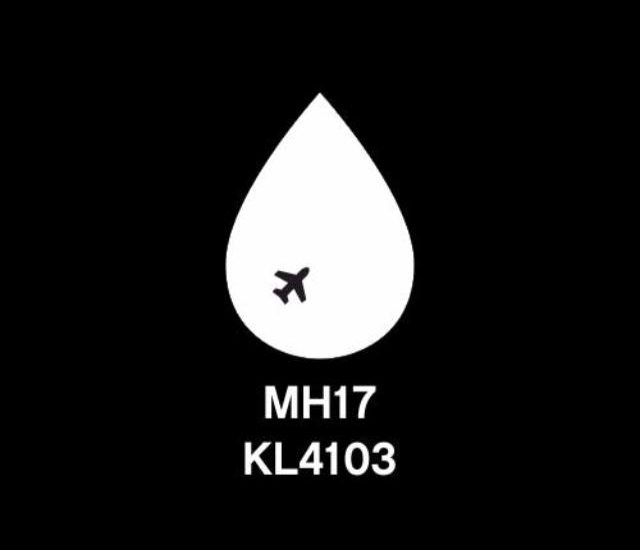Immediate Humanitarian Needs for MH17

Kenyon has very strong opinions regarding mass fatality operations. While Kenyon is not involved in the investigation or recovery operations of MH17, I’ve written an open letter to the leaders of this process. Below, I’ll discuss how the situation developed and information on the path forward.
Why
There are 3 complex issues here and they are all related. The first issue is blame. Within minutes of the loss, many countries condemned Ukraine Separatists of a missile launch, which brought down the plane, a clear violation of international law. The Ukraine Separatists and their ally (Russia) denied this and blamed the Ukrainians. Blame should have been determined after the investigation.
The second issue is practical authority. Because the wreckage is in the territory controlled by the Separatists, the Ukraine government does not have the practical authority / ability to investigate the loss, or to recover, identify and repatriate the deceased and their personal effects. So, control is with the Separatists.
The third issue is trust. Because many countries immediately blamed the loss on the Separatists, they do not trust that any investigation by those countries will be impartial or fair. Since the Separatists do not have the ability to investigate this loss, they are completely dependent on others, whom they do not trust. So they have, in effect, done nothing and allowed no one else to do anything.
Solution
One, follow ICAO Annex 13, with one difference: appoint a lead investigator from a neutral area, perhaps one from a BRICS country; certified, trained and assisted by ICAO staff. Allow the normal investigative parties – Malaysia, Boeing, Component Manufactures – organized as per the normal 16 investigative groups, recognized as standard. These processes also allow for international observers including Ukrainian (Recognized and Separatists), Russia, and all countries who lost citizens aboard the aircraft. These teams gather evidence and present findings, which then establish a conclusion, as opposed to reaching a conclusion without gathering all the facts. This is, in effect, the process that the Dutch Government has followed, with some success, as their teams were the first ones allowed access to the deceased.
Two, establish a mass fatality morgue, operated by the Disaster Victim Identification teams of the countries that have lost citizens. They must have unfettered access to the deceased and the site. Geographically, this should be in Ukraine. But could also be moved to another country such as the Netherlands. Agreements would have to include movement of deceased, across international borders and who will issue death certificates. As is standard, evidence may be collected from the deceased. Therefore, observers should be allowed. These would include Ukrainian (Recognized and Separatists), Russia, and all countries that lost citizens aboard the aircraft who may not have a DVI capability. This needs to happen now. Every delay means it will be that much harder to make a positive identification and, therefore, that much harder for the families. From here, as the deceased are identified, they could be repatriated – again, without hindrance from the political situation.
Three, establish a family assistance center or centers. Geographically this should be in Ukraine, but probably placed in the Netherlands, so that families can hear what is happening from all parties involved and be given regular updates on the progress of the identification and repatriation. A family assistance center also provides for a central location to collect information from the families that will be used to establish the identifications. Also, if the families were in one place, with a united voice, this would help focus the response. Naturally, there is outrage at the loss of the aircraft and more importantly at the lack of a professional response. But what must not be lost in this outrage is that there are 298 directly affected family groups, whose loss will forever be a part of their future. This loss is not something they read about or heard about, but very sadly, something they must live with. It is very personal for them.
Fourthly, allow Malaysia Airlines or its representatives access to the site to recover the personal effects of the passengers. This includes all items from the site that were not aircraft related. These include documents, baggage, and clothing. No item is too insignificant or small. These items often have little salable value, but enormous sentimental value. These will be the keepsakes that help define this event for the families. Their value cannot be overstated. The Separatist leadership should encourage and demand that any items that have been taken from the site by their soldiers or populace should at once be returned to a designated area. So that it can be returned to the families.


Joanna Biddolph
Excellent summary, Bob. Another aspect, which has arisen during this very sad and difficult incident, is the behaviour of the media and the guidelines they should follow. Apart from the disgraceful behaviour of a journalist rifling through belongings found at the scene (he should not have done it, he should not have been filmed doing it), and shots of personal belongings that could be deeply upsetting to families (they should not have been picked over and filmed/photographs except by recovery teams working professionally to collect and return them to families), there was the inappropriate filming of the families as they were taken from behind the scenes to buses for their journey away from the airport. Even if the media were given access to the route, they should not have filmed the families and certainly should not have broadcast their faces or anything significant that might have identified them. I was particularly concerned by the close-up on a man’s face as grief and tears overwhelmed him – it was utterly wrong to film him in these circumstances and utterly wrong to broadcast the film.
This incident has brought out the worst of many interested parties – perhaps to boost individuals’ reputations though it has, instead, damaged their reputations. The lack of respect among so many for whom respect for others should be a given has been astonishing. Some of these actions have been done by others in other incidents, as we know, but that does not make them acceptable. However, the risk is that they might become the norm, if nothing is done to demonstrate that they are wrong. Guidelines on the reporting of incidents such as MH17 exist – but are not being followed. Perhaps there is a role for Kenyon to reiterate the guidelines and set them into contexts so there can be no doubt, around the world, about what is acceptable and what is not when lives have been lost (and in other circumstances) in incidents such as, but not only, this one.
Robert A. Jensen
Thank you Joanna, very good points. This is the third loss (TM470, MH370 and now MH17) within 8 months in which the behavior of the media, both paid and volunteer have been less than sterling. The individual taking taking the action / photograph / filming and the company transmitting the image both need to stop and think. Does the image add journalistic value or is it for shock? If for shock what is the value? Then they should consider the impact it will have on those directly affected by the loss- the families. Just because you can do something (access a crash site, go through another persons property) does not mean you should. Journalists have no exception to that basic rule. In this case they were simply not much better than the people in control of the site at the time.